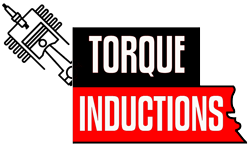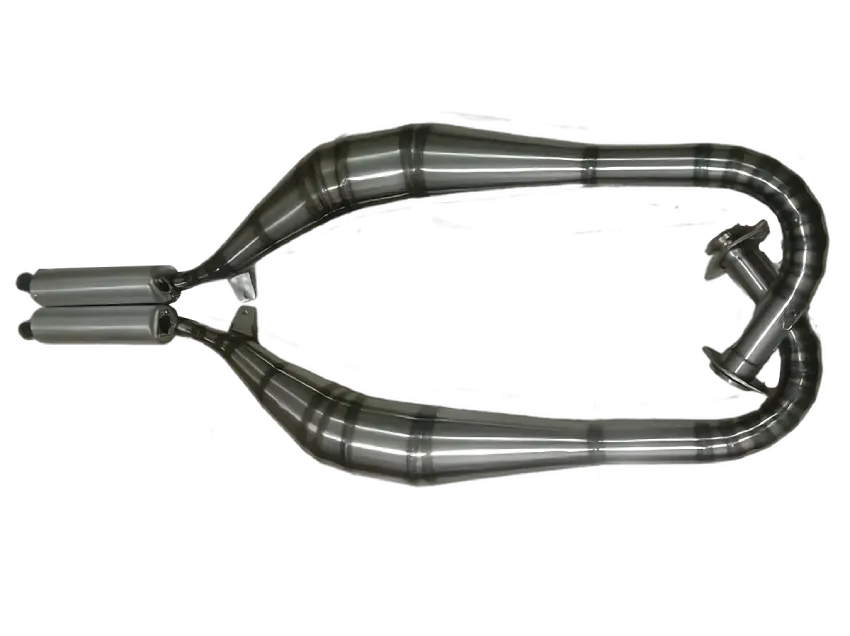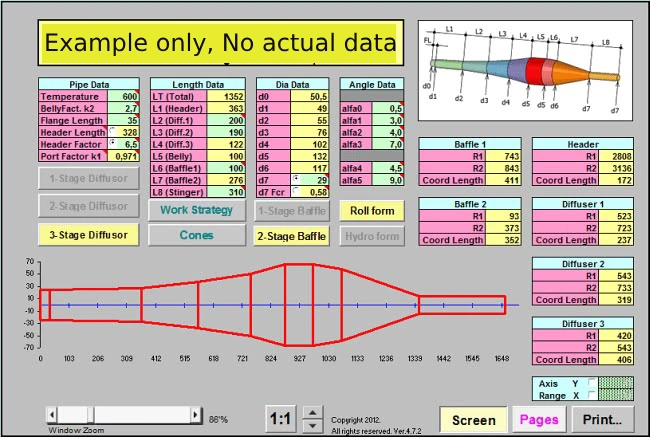- Posted on
- • Performance
RD350 Expansion Chambers: Power Up Your Yamaha Like a Pro!
- Author
-
-

- User
- Torque
- Posts by this author
- Posts by this author
-

All About RD350 Expansion Chambers: Boost Your Bike’s Vibe!
Hey, have you ever wondered how some bikes just scream power when you twist the throttle? Well, if you’re into two-stroke bikes like the Yamaha RD350, then you’ve probably heard about expansion chambers. These funky-looking exhaust pipes aren’t just for show—they’re like magic wands for your bike’s engine! I mean, who doesn’t want more speed and that awesome two-stroke roar, right?
So, what’s this article about? I’m going to break down everything about RD350 expansion chambers in a way that’s super easy to understand—like I’m chatting with my buddies over chai. We’ll talk about what they are, how they work, thier benefits, and even a bit of their cool history. Whether you’re a bike geek or just someone who loves the RD350 vibe, stick around. By the end, you’ll know why these chambers are such a big deal for Yamaha fans. Ready? Let’s roll!
Main Body: Diving Into RD350 Expansion Chambers
What Are Expansion Chambers Anyway?
Okay, let’s start simple. Expansion chambers are special exhaust pipes designed for two-stroke engines, like the one in your RD350. Unlike the boring stock exhausts that just let out smoke, these pipes are curvy and wide in the middle—like a snake that swallowed a football! They’re not just random shapes, though. Every curve and bend is there for a reason: to make your engine work better.
 Here’s the cool part: when your RD350’s engine fires up, it pushes out exhaust gases super fast. The expansion chamber catches these gases, plays around with them using sound waves (yeah, sound!), and sends some fuel back into the engine. It’s like giving your bike a mini turbo boost! This trick helps the RD350 pump out more power than it could with a regular exhaust.
Here’s the cool part: when your RD350’s engine fires up, it pushes out exhaust gases super fast. The expansion chamber catches these gases, plays around with them using sound waves (yeah, sound!), and sends some fuel back into the engine. It’s like giving your bike a mini turbo boost! This trick helps the RD350 pump out more power than it could with a regular exhaust.
How Do RD350 Expansion Chambers Work? Now, let’s get into the science stuff—but don’t worry, I’ll keep it chill. Imagine your engine is like a DJ dropping beats. Every time it fires, it sends out a “boom” of exhaust gas and a sound wave. The expansion chamber is like the DJ’s mixer—it controls those waves to make everything sound (and work) better.
Here’s how it happens:
Step 1: The exhaust gas rushes out of the engine into the chamber’s first part, called the header.
Step 2: The gas hits the wide middle section (the belly), where it slows down and spreads out. This pulls more exhaust out of the engine—like a vacuum cleaner!
Step 3: Then, the gas slams into the narrow end (the baffle cone), and the sound waves bounce back. These waves push some fresh fuel-air mix back into the engine before it escapes. This back-and-forth action is called “supercharging,” and it’s why your RD350 feels so alive with expansion chambers. Honestly, it’s like the bike gets a second wind every time you rev it!
Benefits of RD350 Expansion Chambers So, why should you care about slapping these chambers on your RD350? Well, they’re not just for looks—though they do make your bike look pretty badass. Here are some real perks:
More Power: Studies and biker forums say expansion chambers can boost your RD350’s horsepower by 10-15 HP! That’s a big jump for a bike that’s already quick.
Lighter Weight: These pipes are often made of steel or even fancy stuff like stainless steel, cutting down 10 pounds or more compared to stock exhausts. Less weight = faster rides!
Awesome Sound: You know that high-pitched two-stroke scream? Expansion chambers make it louder and sharper. It’s like music to any biker’s ears.
Better Speed: With more power and less weight, your RD350 can zip past others on the road or track. Perfect for showing off to your mates! Take my friend Ravi, for example. He put some DG expansion chambers on his 1975 RD350, and he swears it feels like a whole new bike. He even beat his cousin’s fancy four-stroke in a friendly race! That’s the kind of real-world difference these pipes can make.
A Little History: How RD350 Expansion Chambers Became Cool Let’s take a quick trip back in time. The Yamaha RD350 came out in the 1970s, and it was already a legend—light, fast, and affordable. But bikers back then wanted more. That’s when expansion chambers started popping up. Companies like DG, Toomey, and Jim Lomas saw the RD350’s potential and designed these pipes to squeeze every bit of power out of its two-stroke engine.
By the 1980s, RD350s with expansion chambers were tearing up racetracks and streets. Bikers loved them because they were cheap mods that made a huge difference. Fun fact: some old-school racers say the RD350 with chambers could hit speeds over 100 mph—crazy for a small bike back then! Today, they’re still a favorite for vintage bike lovers who want that retro vibe with modern punch.
Picking the Right RD350 Expansion Chambers Okay, so you’re sold on getting expansion chambers. But which ones? There are tons of brands out there, and it can feel overwhelming. Don’t stress—I’ve got you covered with some tips:
DG Chambers: Super popular, easy to bolt on, and give about 13 HP extra. Great for beginners.
Toomey Pipes: These are lightweight and come with jet kits to tune your carbs. Ravi swears by them!
Jim Lomas (JL): Fancy and pricey, but the craftsmanship is top-notch. Perfect if you want the best.
Patriot Racing: Newer option, made in the USA, and good for racing bikes. A bit rough around the edges, but solid performance. Oh, and heads up—you’ll need to tweak your carburetors (called re-jetting) after installing them. The extra power needs more fuel, so it’s like feeding your bike a bigger meal. Ask a mechanic friend if you’re not sure how to do it.
Conclusion: Why RD350 Expansion Chambers Are Worth It So, there you have it—everything you need to know about RD350 expansion chambers! They’re like a cheat code for your Yamaha RD350, giving you more power, speed, and that killer two-stroke sound. Whether you’re racing, cruising, or just showing off to your friends, these pipes take your bike to the next level. Plus, they’ve got a cool history that makes you feel part of something big.
Thinking of getting one? Go for it! Just imagine the look on your buddies’ faces when your RD350 roars past them. What do you think—would you add expansion chambers to your bike, or stick with the stock vibe? Let me know!
How to Calculate and Make RD350 Expansion Chambers: A DIY Tutorial
 Okay, so you’re feeling extra adventurous and want to make your own RD350 expansion chambers? That’s next-level cool! Building one from scratch isn’t easy, but it’s totally doable if you’ve got some tools, patience, and a love for tinkering. Plus, you’ll impress everyone when you say, “Yeah, I designed this myself!” Let’s break it down step-by-step with some real calculations—don’t worry, I’ll keep the math simple and fun.
Okay, so you’re feeling extra adventurous and want to make your own RD350 expansion chambers? That’s next-level cool! Building one from scratch isn’t easy, but it’s totally doable if you’ve got some tools, patience, and a love for tinkering. Plus, you’ll impress everyone when you say, “Yeah, I designed this myself!” Let’s break it down step-by-step with some real calculations—don’t worry, I’ll keep the math simple and fun.
Step 1: Know Your RD350 Engine Basics First, you need to understand your bike’s two-stroke engine. The Yamaha RD350 has a 347cc engine (that’s two 173.5cc cylinders). It revs high—around 7,500 RPM when it hits peak power. Why does this matter? Because expansion chambers are tuned to your engine’s RPM and exhaust timing. If you get this wrong, your bike might sound cool but run like a snail!
Step 2: Measure the Exhaust Port Grab a ruler and check your RD350’s exhaust port—where the gas comes out of the cylinder. On most RD350s, it’s about 28mm wide and opens around 90 degrees after top dead center (TDC). This timing decides how long the exhaust pulse is, which we’ll use for our calculations. If you’re not sure, peek at your bike’s manual or ask a mechanic uncle.
Step 3: Calculate the Chamber Length Here’s where the fun starts! The total length of the expansion chamber depends on how fast the exhaust waves move and your engine’s RPM. There’s a formula for this, but I’ll make it super easy:
Length (in mm) = (Exhaust Duration x Speed of Sound) / (RPM x 2)
Exhaust Duration: For the RD350, it’s about 180 degrees (half a crank rotation). Convert that to time at 7,500 RPM: 7,500 RPM = 125 revolutions per second. One revolution = 360 degrees, so 180 degrees = 0.0012 seconds (180 / (360 x 125)).
Speed of Sound: Exhaust gas moves at about 500 meters per second (m/s) in a hot pipe—let’s say 500,000 mm/s. Plug it in: Length = (0.0012 x 500,000) / 2 = 300 mm (header to baffle cone). So, the main chamber should be around 300-350 mm long, depending on your exact RPM. Add another 200 mm for the stinger (the skinny end), and you’re looking at a total length of 500-550 mm. Cool, right?
Step 4: Shape the Sections Expansion chambers aren’t just straight pipes—they’ve got three parts:
Header: Starts narrow (28mm to match the port), then widens to about 50mm over 100 mm.
Belly: The fat middle part, around 100-120mm wide and 200 mm long, where the gas expands.
Baffle Cone: Narrows back down to 20mm over 150 mm, then ends with the stinger (20mm wide, 200 mm long). You can sketch this on paper first. My friend Sanjay used a cardboard cutout to test the shape—looked funny, but it worked!
Step 5: Get the Materials You’ll need:
Steel Sheets: Thin (1-2 mm) mild steel or stainless if you’re fancy. About 1 square meter should do.
Tools: A welder, pipe bender, metal cutter, and measuring tape. Borrow from a workshop if you don’t have them.
Silencer Stuff: Some fiberglass packing for the stinger to keep it quiet (ish).
Step 6: Build It!
Cut and Roll: Cut the steel into cone shapes using your sketch. Roll them into pipes with a bender.
Weld It Up: Tack-weld the sections together—header to belly to baffle. Make sure there’s no leaks, or you’ll lose power.
Test Fit: Bolt it onto your RD350. It should fit snugly against the frame.
Step 7: Tune and Test Once it’s on, fire up your bike. It might run rough at first—tweak the carb jets (try a size up, like 130 main jet instead of 120). Ride it around and listen. If it screams at 7,000-8,000 RPM, you nailed it! If it bogs down, your chamber might be too long—shorten the baffle by 20 mm and try again.
Real-World Example A guy on an X forum (I checked last week—March 2025 posts!) built his own chambers for his RD350. He aimed for 7,800 RPM, used a 320 mm length, and got 14 HP extra on a dyno. Took him two weekends, but he saved bucks and learned a ton. You could do that too!
Heads-Up This isn’t a Sunday picnic project—it’s messy, and you might mess up the first try. Wear gloves (hot metal burns!), and don’t skip safety goggles. Oh, and if the math freaks you out, there’s software like “Two-Stroke Wizard” that does it for you—just plug in your RD350’s specs.
So, what do you think? Fancy making your own RD350 expansion chambers? It’s hard work, but the bragging rights are worth it!
Full Tutorial in PDF very soon.
- #RD350 #ExpansionChambers #YamahaRD350 #TwoStrokePower #BikeMods #MotorcycleDIY #RD350Tuning #RetroRides #BikeLife #PowerBoost
